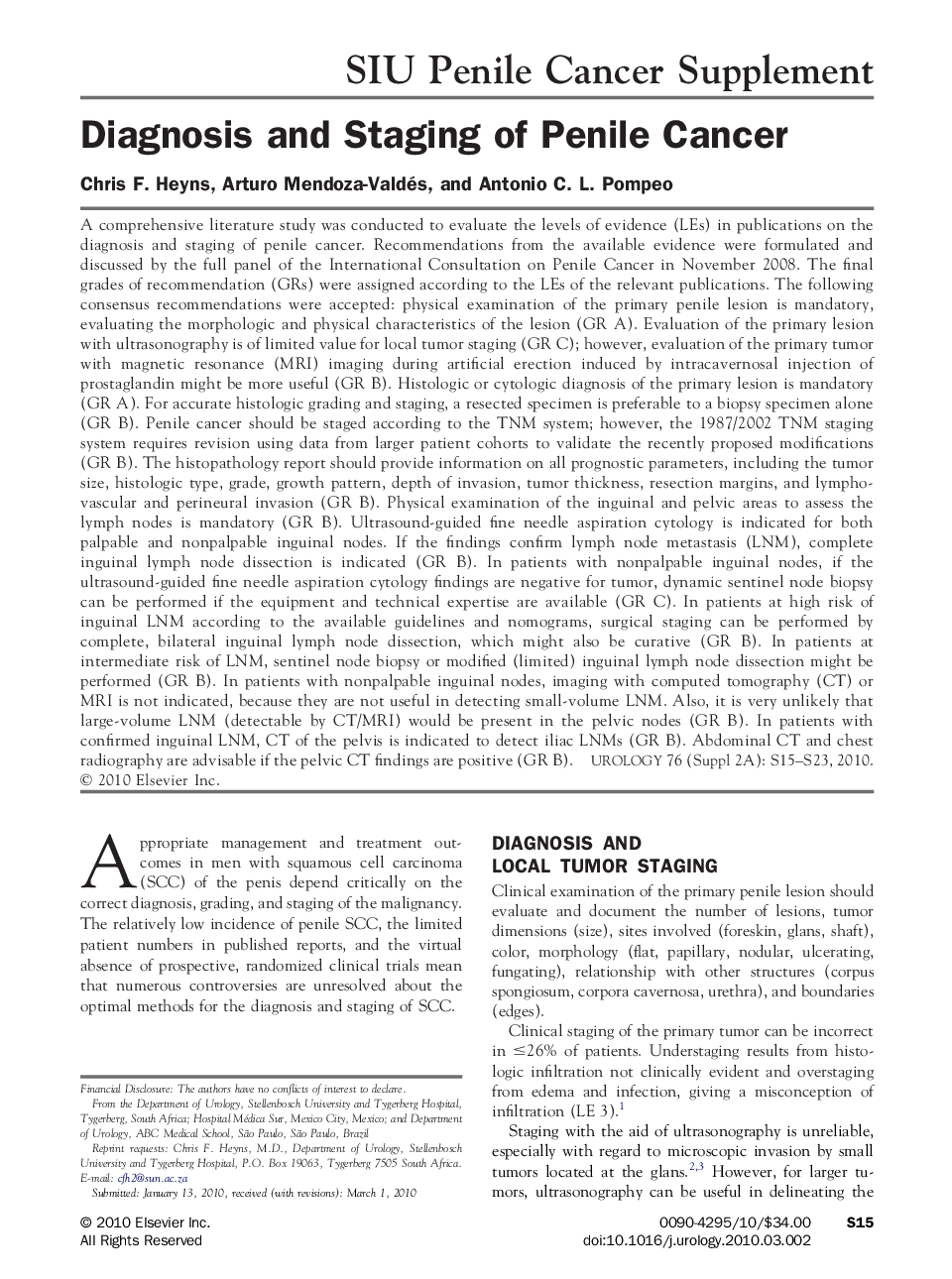| کد مقاله | کد نشریه | سال انتشار | مقاله انگلیسی | نسخه تمام متن |
|---|---|---|---|---|
| 3900830 | 1250344 | 2010 | 9 صفحه PDF | دانلود رایگان |

A comprehensive literature study was conducted to evaluate the levels of evidence (LEs) in publications on the diagnosis and staging of penile cancer. Recommendations from the available evidence were formulated and discussed by the full panel of the International Consultation on Penile Cancer in November 2008. The final grades of recommendation (GRs) were assigned according to the LEs of the relevant publications. The following consensus recommendations were accepted: physical examination of the primary penile lesion is mandatory, evaluating the morphologic and physical characteristics of the lesion (GR A). Evaluation of the primary lesion with ultrasonography is of limited value for local tumor staging (GR C); however, evaluation of the primary tumor with magnetic resonance (MRI) imaging during artificial erection induced by intracavernosal injection of prostaglandin might be more useful (GR B). Histologic or cytologic diagnosis of the primary lesion is mandatory (GR A). For accurate histologic grading and staging, a resected specimen is preferable to a biopsy specimen alone (GR B). Penile cancer should be staged according to the TNM system; however, the 1987/2002 TNM staging system requires revision using data from larger patient cohorts to validate the recently proposed modifications (GR B). The histopathology report should provide information on all prognostic parameters, including the tumor size, histologic type, grade, growth pattern, depth of invasion, tumor thickness, resection margins, and lymphovascular and perineural invasion (GR B). Physical examination of the inguinal and pelvic areas to assess the lymph nodes is mandatory (GR B). Ultrasound-guided fine needle aspiration cytology is indicated for both palpable and nonpalpable inguinal nodes. If the findings confirm lymph node metastasis (LNM), complete inguinal lymph node dissection is indicated (GR B). In patients with nonpalpable inguinal nodes, if the ultrasound-guided fine needle aspiration cytology findings are negative for tumor, dynamic sentinel node biopsy can be performed if the equipment and technical expertise are available (GR C). In patients at high risk of inguinal LNM according to the available guidelines and nomograms, surgical staging can be performed by complete, bilateral inguinal lymph node dissection, which might also be curative (GR B). In patients at intermediate risk of LNM, sentinel node biopsy or modified (limited) inguinal lymph node dissection might be performed (GR B). In patients with nonpalpable inguinal nodes, imaging with computed tomography (CT) or MRI is not indicated, because they are not useful in detecting small-volume LNM. Also, it is very unlikely that large-volume LNM (detectable by CT/MRI) would be present in the pelvic nodes (GR B). In patients with confirmed inguinal LNM, CT of the pelvis is indicated to detect iliac LNMs (GR B). Abdominal CT and chest radiography are advisable if the pelvic CT findings are positive (GR B).
Journal: Urology - Volume 76, Issue 2, Supplement, August 2010, Pages S15–S23